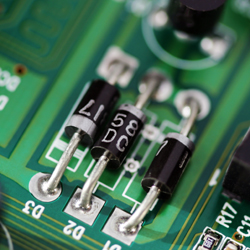Novel semiconductor devices
Silicon carbide in the hexagonal crystal form, also known as the alpha form, is a semiconductor. This material is widely used for manufacturing semiconductor electronic devices. The electromagnetic properties of silicon carbide combined with its physical properties make it ideal for integrated circuits. On a thin slice of the silicon crystal, a wafer, fabrication of micro-electronic devices is possible resulting in a high quality of integrated circuit. This novel material is scarce in nature. Nevertheless industrial production is possible with the aid of chemical vapour deposition methods. Silicon carbide has two crystal structures and the SOLSIC project has focused its research on the cubic form. The hexagonal structure has been extensively studied and in this form, silicon carbide is commercially available. In contrast, little is known about the physical and chemical properties of the cubic structure. With the SOLSIC project research the possibility of a new generation of transistors has emerged. Starting with the physical properties, wafer manufacturers need specific surface properties. Low roughness, no visible scratches and no damaged layer below the surface are only a few of the many stringent requirements expected from the material. Silicon carbide is the third hardest material found in nature. Therefore elaborate and sophisticated processes have been developed for polishing cubic silicon carbide surfaces. Research has shown that the polishing methods applicable to the hexagonal structure do not suffice for the cubic form of the carbide. With the state of the art processes developed by the SOLSIC project, effective industrial polishing of the material in cubic structure can be achieved.







